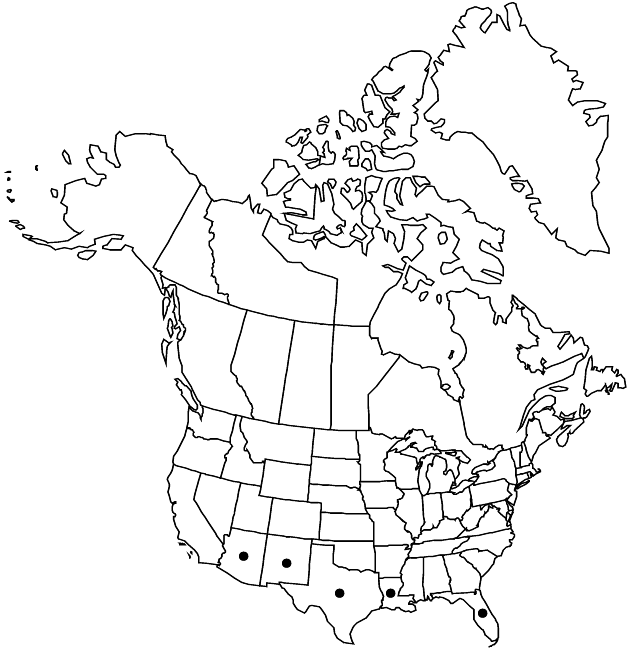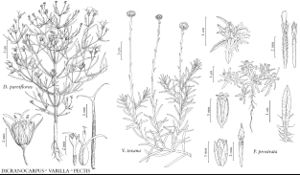Difference between revisions of "Pectis prostrata"
Icon. 4: 12, plate 324. 1797.
FNA>Volume Importer |
imported>Volume Importer |
||
| Line 47: | Line 47: | ||
|publication year=1797 | |publication year=1797 | ||
|special status= | |special status= | ||
| − | |source xml=https:// | + | |source xml=https://bibilujan@bitbucket.org/aafc-mbb/fna-data-curation.git/src/bb6b7e3a7de7d3b7888a1ad48c7fd8f5c722d8d6/coarse_grained_fna_xml/V19-20-21/V21_540.xml |
|tribe=Asteraceae tribe Heliantheae | |tribe=Asteraceae tribe Heliantheae | ||
|subtribe=Asteraceae (tribe Heliantheae) subtribe Pectidinae | |subtribe=Asteraceae (tribe Heliantheae) subtribe Pectidinae | ||
Revision as of 21:00, 27 May 2020
Annuals, 1–30 cm (across); herbage not scented. Stems prostrate to ascending (often mat-forming, densely leafy, especially distally), puberulent (in lines or throughout). Leaves linear to narrowly oblanceolate, 10–40 × 1.5–7 mm, margins with 4–12 pairs of setae 1–3 mm, faces glabrous (abaxial densely dotted with round oil-glands 0.1–0.3 mm). Heads borne singly or in congested, (leafy) cymiform arrays. Peduncles 1–2 mm. Involucres campanulate, cylindric, or ellipsoid. Phyllaries coherent (falling together), oblong to obovate, 5–8 × 1–3 mm (often dotted in submarginal rows and sometimes along midribs with elliptic oil-glands 0.1–0.3 mm). Ray florets 5; corollas 2.5–3.5 mm (scarcely surpassing phyllaries). Disc florets 3–17; corollas 1.8–2.5 mm (2-lipped). Cypselae 2.5–4.5 mm, strigillose; pappi of 2 (ray) or 5 (disc) lanceolate scales 1.5–2.5 mm. 2n = 24.
Phenology: Flowering Jul–Nov.
Habitat: Open sites in deserts, grasslands, oak-pine-juniper woodlands, roadsides
Elevation: 0–2000 m
Distribution

Ariz., Fla., La., N.Mex., Tex., Mexico, West Indies, Central America.
Discussion
The development of roads and highways has created ideal habitats for Pectis prostrata. Its range appears to be expanding along the coasts of Florida; it was discovered in Louisiana relatively recently. It can be expected to spread along the Gulf Coast and perhaps northward along the Atlantic Coast as well. Autogamy has apparently assisted P. prostrata to spread rapidly as suitable new habitats have become available.
Selected References
None.
